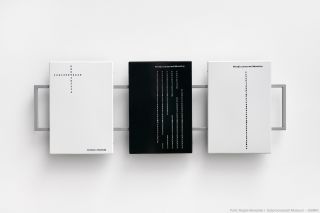‘painting’
Zsófia Beke
… her doctorate degree in 2005. Her dissertation focused on the spatial-theoretical synthesis of painting in the 1990s’ in Hungary. In 1995-1996, she was an art historian at the Hanság Museum of Mosonmagyaróvár, and between 1995 and 1998, she was a researcher at the Institute for Art History of the Hungarian Academy of Sciences. From 1997 she was an art historian at the Municipal Art Museum of Győr, and from 1999 a curator at the Platán Gallery of the Polish Institute in Budapest. In …
ALBERT Ádám: My Appropriations (Dezső Tandori), 2022
… in this exhibition, whose “theme” centres on one of the key works of the master’s late period, the painting series entitled Horizontal-Vertical (1975–1977). Tandori reflects with gentle and empathetic irony on the ascetic reduction of form and colour evident in these works, which were also presented within the framework of his 1983 memorial exhibition at the Hungarian National Gallery [3], and which, according to Lóránd Hegyi, could also be regarded as a manifestation of visual sign creation …
ALBERT Ádám: System Analysis V, 2022–2023
… paths, all leading to the same destination. The forms derived from textual, framed pictorial (painting, print, etc.), motion picture- and photography-based (perforated edge) media become “unified”: following its digitalisation and classification according to the new system, the data/information is stored in the corresponding files and folders.
Documents of János Tornyai (1869-1936)
… museum named after him. Following Tornyai’s death in 1936, a significant portion of the paintings and documents he left behind disappeared.They were only found much later, after the passing of his widow in 1983, under the floorboards of the painter’s last studio in Horányszky Street, Budapest. The painting estate was shared between the János Tornyai Museum in Hódmezővásárhely and the Hungarian National Gallery, while the documents were transferred to the latter’s Archives and …
László Beke Archives
… to intermedial art, i.e. to the interdisciplinary frontiers of photography and film theory, painting, sculpture, graphics, architecture, experimental film, and video. László Beke’s manuscripts and essays in the Archive cover the wide range of his interests in aesthetics, philosophy of art, psychology of art, sociology of art, visual anthropology, intermedia, ethnography, structuralism, linguistics, semantics, semiotics, and visual education. His methodological research has explored …




